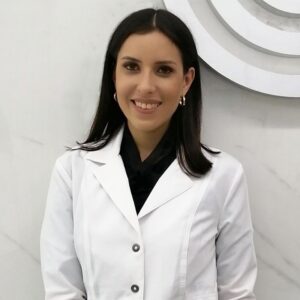What single gene mutations/defects can be diagnosed with PGD?
What kind of mutations may be detected via PGD and what is the limitation of the technique?
Which genetic anomalies can be detected via PGD? How many diseases can PGD test for? Under what circumstances should PGD be used?

PGS can detect any single gene mutation that can be diagnosed in the patients, that means that if we can identify where the problem is because we know the location in the chromosome, and we know the proteins that are abnormal or what the mutation is, we can study it in the embryo. Sometimes, it’s easier because if we are testing quite common diseases like cystic fibrosis, thalassaemias, muscular dystrophies, we already have the kids that allow us to test them. Even if we are dealing with a really strange or uncommon mutation, we can develop the technique, and we can identify the markers, and carry out the test on the cells of the embryo.
The only condition to detect a genetic mutation in the embryos is that we can identify that mutation in the parents.


Most of the inherited diseases we detect are the common ones based on common ethnicities. Most of these cases are cystic fibrosis, alpha and beta thalassemia, single cell anemia, tay-Sachs disease. The list is large for single gene disorders which means that we can test any type of mutation from single gene disorders that are being found in families. However, in the last 10 years there is a huge growth in this area so we can test some mutations that are de novo, they are being depicted in a person and not being inherited. We can also test other factors such as complex or rare diseases. Any mutation can be tested now, however, what is truly helpful in any kind of technique used for single gene analysis is to always get DNA from the family, if the mutation is being found in the family, or in a diseased or infected person. These two types of DNA help us get a more accurate result in PGTM or PGD.

Any mutation that is known and can be detected in an individual can also be detected in an
embryo, so there is no limit in identifying the mutation generating the disease that we are looking for. So many couples or individuals with a known mutation can generate an embryo to make the diagnosis.
The quality of the diagnosis is fully related to the technique used to make the diagnosis itself. Our major problem is that due to the extremely small amount of DNA, and when you are talking about genetic or monogenic disorders, we need to have both panels of the represented mutation to detect an affected individual. This very small part of DNA can be so small that the machine and computer read one mutation instead of reading the two mutations. We call this ADO (Allele Drop Out) which means we get the wrong diagnosis, believing that that embryo is a healthy carrier when it is, in fact, an affected individual. This is a percentage of minimal risk at the moment, but that we cannot deny that it exists.
So, when a pregnancy is achieved after a monogenic disorder or genetic disorder diagnosis, we always recommend the couple double-check with prenatal testing like chorionic villus sampling or amniocentesis.
Related questions
What is the PGT-A strategy for patients with implantation failure?

What are gene mutations and how can they affect my fertility?






